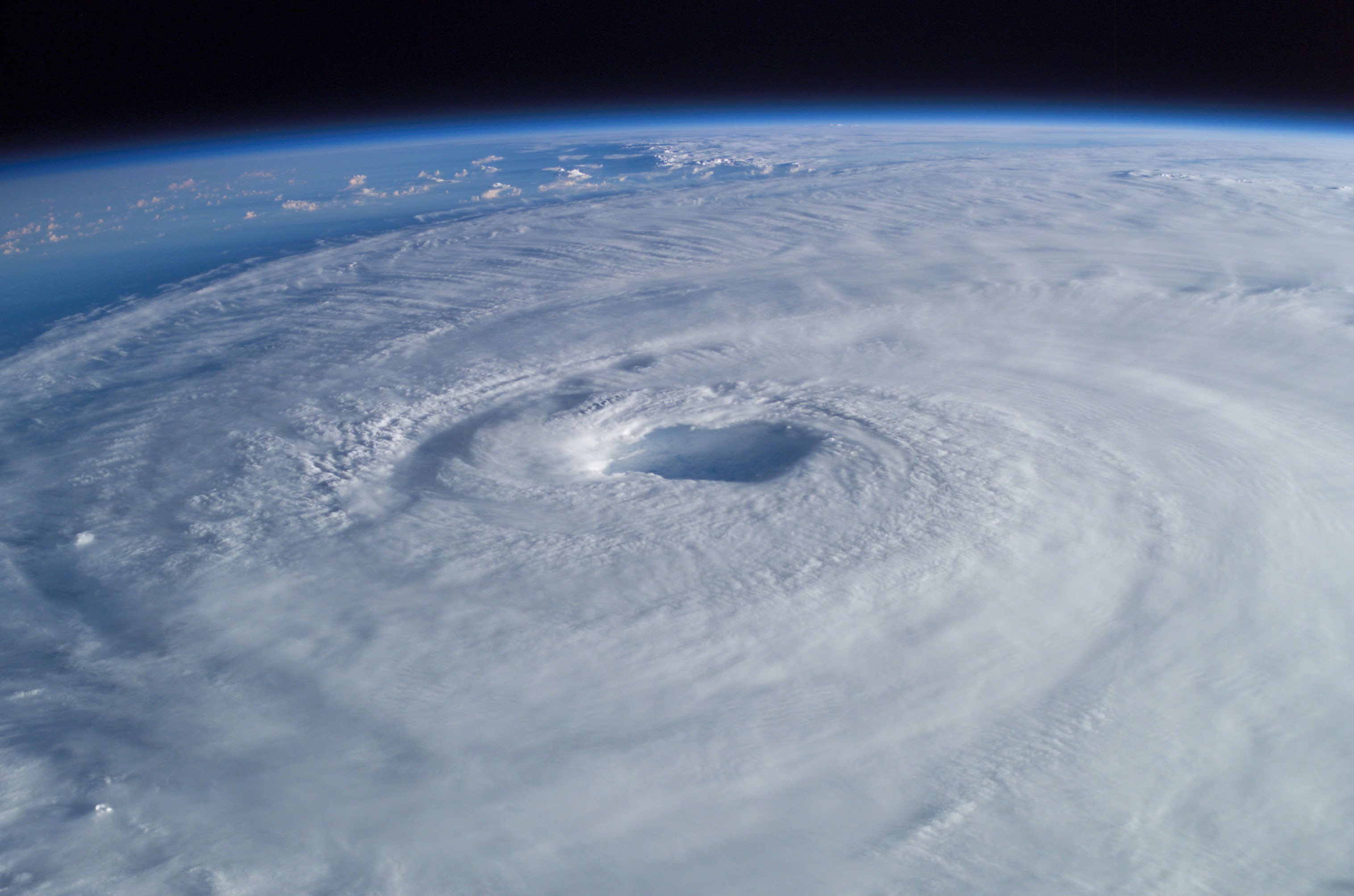It's hurricane season in the Atlantic right now, so that means lots of news channels will be reporting on the latest storms to develop. Given that I grew up in Puerto Rico and lived a few years in Florida, I have had my share of storms and can attest to their intensity.
Above is an awesome graph created by John Nelson, a data visualization expert. The graph depicts every tropical storm and hurricane that has been recorded since 1851, color coded by intensity. The projection is polar, so we see Antarctica in the center and the US off in the edge near the right. The Southern Hemisphere hasn't been tracked until more recently, hence the fewer storms there.
This post, as you may be able to tell from the title, ties together hurricanes, storm gods, and the planet Jupiter. More information after the jump.
 |
| Hurricane Isabel in 2003. Credit: Mike Trenchard, Johnson Space Center. |
Hurricanes form when warm water evaporates and forms a low-pressure storm. The storm grows and strengthens as more and more water evaporates from the ocean. As the water condenses out, the pressure drops and winds pick up. That causes further evaporation and a positive feedback loop is formed. The system eventually starts spining thanks to the rotation of the Earth (the Coriolis effect): counterclockwise in the Northern Hemisphere and clockwise in the Southern. These are just some quick details on the formation of such storms, but I'm sure a meteorologist can give you far more information than I can.
Given the requirement of warm water, hurricanes from in the late summer months, though the precise dates vary by location. A curious aspect is that they don't form exactly at the equator nor do they every cross it (a consequence of the Coriolis effect being weakest there). The plot below shows this very clearly and is similar to the first image in this post (except in a different projection and covering a shorter span of time).
 |
| Hurricane tracks. Credit: Citynoise at Wikipedia |
The word hurricane is believed to come from the Taino word juracán. Juracán was the god of storms and/or evil in Taino mythology and would come ravage the islands from time to time. However, I've also heard it said that juracán was just the word for the storms and not for the god itself...
The Taino were the indigenous people of the Caribbean (along with the Caribs) when the Spanish first arrived. Many words were adopted into the Spanish (and later English) language, such as the aforementioned hurricane. Barbacoa (barbecue) is another such word adopted from the Taino. Given that some Tainos lived in Puerto Rico (they called it Borinken), I am quite happy that their language has survived in some aspect.
There is another famous deity that is sometimes associated with storms: Zeus. This Greek god is typically depicted with a thunderbolt in his hand and stands as the king of the gods. The equivalent in Roman mythology is Jupiter, from which we get the name of the largest planet in our solar system:
 |
| The planet Jupiter (the moon Europa is casting the shadow). Credit: NASA |
As you can see above, Jupiter has a complex atmosphere filled with clouds. Unlike Earth, however, these clouds are made of ammonia crystals (and other related compounds, varying by depth) with substances like phosphorus, sulfur, or hydrocarbons to provide coloration. One of the most striking features of Jupiter's atmosphere, though, is the Great Red Spot:
 |
| The Great Red Spot of Jupiter, with the Earth approximately to scale. Credit: NASA |
The Great Red Spot is a storm system that superficially looks like a hurricane does on Earth. However, the two couldn't be more different. The scale is the most obvious difference: the Great Red Spot is as large as 2 or 3 planets the size of Earth. That is one gigantic storm! It also has been around for a very long time- at least several hundred years. Basically, ever since we've pointed telescopes at Jupiter we have always seen the Red Spot. Imagine being in a storm system larger than your home planet and that it has being going on for as long as you can remember.
In the details, the Great Red Spot is almost completely opposite to a hurricane. For one, it's made up of colder gas than it's surroundings, whereas hurricanes are warmer. You remember that hurricanes are low-pressure systems, right? Well, the Great Red Spot is a high-pressure system. It turns out that high-pressure systems form anticyclonic storms (hurricanes are cyclones). What this means is that they rotate opposite to what you would expect. A hurricane in the Southern Hemisphere (of Earth or Jupiter) would rotate clockwise. The Great Red Spot rotates counterclockwise.
Below is an animated gif created from data the Cassini spacecraft took as it flew by Jupiter in November of 2010. Notice the way the Great Red Spot rotates.
 |
| Jupiter's atmosphere. Credit: NASA/JPL/University of Arizona |
As we pass through another hurricane season in the Atlantic here on Earth, remember that other planets have their own unique atmospheres. In large planets like Jupiter's, the storms on these other worlds can dwarf the Earth itself.

No comments:
Post a Comment
Note: Only a member of this blog may post a comment.